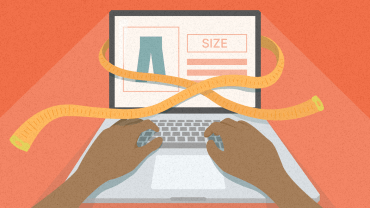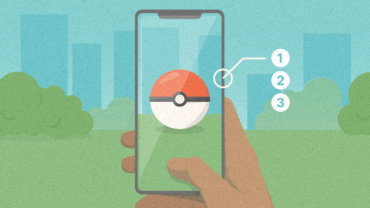Case Study: How One Bank Increased Sales of Current Accounts by 300% by Leveraging Behavioral Insights

In this case study, you’ll discover:
- How flawed design led to unnecessary friction during the customer journey;
- How customers were unintentionally defaulted to the wrong choices; and
- How asking the right questions helped a retail bank to achieve a 387% increase in sales and a massive boost in customer satisfaction.
It’s a fact that financial institutions are not places people go to look for fun. They don’t have the advantages that phone stores, car dealers or wedding dress salons do, where customers (hopefully) leave with a real feeling of joy and satisfaction and can’t wait to tell their friends and family about their latest purchase. No-one looks forward to spending Saturday afternoons browsing bank services, or Instagrams their bank visits!
Customers go to their bank to carry out boring, routine, but necessary tasks – making payments, withdrawing cash, paying bills, and so on.
What this means in practice is that they want to spend as little time as possible interacting with the bank – they want to get in (or get online), do what they have to do, then get on with the rest of their lives. And this weak customer involvement can create real problems for banks when it comes to selling customers more complex and more profitable services and products. One retail bank in Southeast Europe faced exactly this problem. After months of work and investment in designing and launching a new range of transactional banking packages, it seemed their customers just weren’t interested.

Discover ground-breaking ideas and fascinating solutions.
Despite offering customers 20-40% savings on normal transactional activity (mainly on unnecessary fees), only 16% opted for any of the new packages. 84% of new customers still chose to sign up for the most basic option – a current account with a debit card.
Standard current accounts for retail banks are like appetizers for restaurants or prepaid telephone cards for mobile phone service providers. They’re the most basic entry-level products offering the least additional benefits to the customer and no less importantly, the lowest profits for the bank.
Boost signups to premium packages
Kornel Klusoczki, from Boxed Skills behavioral economics team, was given the challenge of reversing this situation and finding ways to seriously boost signups to the newly-designed packages.
The goal was to guide more customers away from opening basic current accounts and towards choosing packages which were a better fit for their actual needs. Kornel and the Boxed Skills international team already had extensive experience in this area.
“I used to end up in similar product design traps during my product development career”- says Kornel. “We used to develop products using prudent development processes, data analytics, and customer facing interviews. We firmly believed that all our careful work would result in well-formulated product offers that our target customers would jump at. But the reality was different – customers kept on simply choosing the cheapest offer instead.”
Guide more customers away from opening basic current accounts and towards choosing packages which were a better fit for their actual needs.
That’s why Kornel and his team decided to adopt a different approach. Their solutions tackled three main issues.
1. Make the comparison easier
To find what was going wrong, Kornel and his team had to start as early as possible in the customer journey. First, they looked at how prospective customers could find the information they needed regarding the available offers.
They interviewed the local retail banking team and confirmed that full details of the available packages and current accounts were available on both the website and in physical branches. At first glance, that seemed positive. But when they dug deeper, potential problems soon emerged.
Having to seek out three different web pages or leaflets forced them to work harder and put in more effort, when all they really wanted was to make a quick, simple and intuitive decision.
Although the information was all there on the website, and in the form of leaflets and brochures in branches, this information was not in one place. In the branches it was in separate standalone documents for each package, and on the website, it was spread across three different pages, requiring customers to click on three separate links to find and read it.
This created immediate friction for the customer in making any comparison or decision. Having to seek out three different web pages or leaflets forced them to work harder and put in more effort, when all they really wanted was to make a quick, simple and intuitive decision. This created complexity and an obstacle to understanding or even considering the available benefits.
Friction
Everything along the customer’s journey, which is objectively a little harder than it should be. It needs to be removed to elicit a desired behavior or response.
Customers who are faced with uncertain situations or who fear making a wrong decision, tend to fall back on the simplest option as a safe harbor from potential mistakes or the unknown. Any friction which prevents the customer from getting a clear, single overview of their available choices can cause this to happen.
So, what was the solution? Simple – create a single, easily digestible, one-page overview of all the key product features. Just taking away the hassle of clicking or flicking back and forward between pages was a huge step towards a smoother customer experience. But that was only the beginning…
2. Change the defaults
Do you change your new phone’s ringtone immediately after you buy it? What about the sound of the alarm? How about your TV channel settings? Do you just leave them the way they come from the service provider?
Default
When two or more choices are given to us, the default one is automatically assigned if we make no action
If you do, you’re not alone! We’re all a little lazy, and we often simply accept what we’re given. In behavioral economics, this is called the default.
So, what was the default in our retail banking challenge?
It turns out there were three places where defaults increased the chances of customers sticking to a current account.
Firstly, immediately upon entering the bank, customers were greeted with these choices when taking a ticket to see an advisor:
- Current account opening
- Credit application
- Transaction
- Cash payments
- Premium Services
Yes, that’s right. The very first thing they saw was exactly what they already wanted and what the bank hoped to steer them away from – a current account. Before they had spoken to anyone or seen any other offers, their first action confirmed this as the default option.
The second default was exactly the same, but on the website. The link was named “current account services”. Again, a default to the basic product.
Simply renaming the option to Transactional Banking Packages immediately forced people to explore alternatives.
The wording tied them to their first choice too quickly and gave no reason for the “lazy” customers to even think about any possible alternatives.
In both cases the intervention was quite straightforward. Simply renaming the option to Transactional Banking Packages immediately forced people to explore alternatives.
The third problematic default came at the next stage of the sales funnel – the application process. After choosing the ‘current account opening’ option and taking their ticket, customers could fill out the application form while they were waiting. But what form was waiting there for them? You guessed it – “Current account application form”.
So, by the time the customer actually sat down to talk with the sales advisor, they had already defaulted to the current account option at least 3 times. After that it would be almost a miracle if they chose anything else!
3. Ask the right questions
After those relatively straightforward first steps, next came the hard part. The whole application form needed to be reframed to help the customer to make the best possible choice.
One of the main reasons packages are better for the customer is that most people have to go back to their bank within a few months of opening a basic current account in order to add on additional services. That means more hassle for them and for the bank.
Rather than just tell customers this, Kornel and his team decided to use a set of carefully crafted questions which would drive customers to the right option.
The aim was to make the customers feel more and more comfortable with their decision, but not in a single step. The information about the packages would be shared bit-by-bit, so that the customer could come to a satisfying, self-driven decision by themselves.
As a first step, they aimed to help the customer recognize whether a simple current account was likely to be only a short-term choice. They asked customers to choose which of the following statements applied to them:
- “I make up to 6 transfers per months”
- “It regularly happens to me that, in a 3-month period, I need more cash in hand than the ATM withdrawal limit allows me”
- “Occasionally I see the need for short term extra liquidity, but no more than 500 euro”
- “I want the flexibility to control my heating, telephone, and electricity costs to keep them under 100 euros”
Using real-life situations like this helps customers to navigate towards the right choice. It’s a much simpler, and more self-driven approach than making them wade through long lists of fees, charges, limits, and features, which they often don’t really understand.
An increase of 387% in package take-up
So, to recap, Kornel’s team identified three areas where behavioral economics intervention could modify customer behavior.
- They eliminated 3 critical frictions which prevented the customer from having a full overview of their choices.
- They modified the steps which unintentionally defaulted customers to the current account option.
- They developed a new approach where customers were asked the right questions which led them to choosing one of the packages
The next step was to test the effects. A/B testing was carried out over a six-week period in the form of 5 control and 5 treatment bank branches monitoring multiple KPIs.
Customers not only chose more complex banking solutions, but they left the bank with the confidence that they had got all the information they needed and had made the right choice.
The results were clear. In the control branches customers continued to behave as before, and only 16% to 18% of customers selected any of the three packages.
But in the treatment branches, the difference was immediate … and dramatic. 62% of the customers decided to go for a package. This represented a massive increase over the original 16% base.
The biggest improvement though, was seen in customer satisfaction. In the treatment branches, the Net Promoter Score shot up by 26%. Customers not only chose more complex banking solutions, but they left the bank with the confidence that they had got all the information they needed and had made the right choice.
Key Takeaways
- Start by understanding the customer journey. Follow the entire path that the customers have to go through. Any stage of the sales funnel – awareness, interest, decision, action – can have friction which may make your customer switch to another track.
- Be careful what defaults you unintentionally create. If the design of the customer journey or the buying process defaults your customers to the wrong options, it will be difficult to change their choices.
- Help customers choose by asking them the right questions instead of showing them a confusing list of features. When customers see information that they can recognize as similar to their own behavior or pattern, they find it easier to connect to a given choice.
- Never compromise on testing. Sometimes improvement is immediately visible in the design phase of a new approach. But even if the solution appears straightforward, insist on testing. Measurement is essential to boost confidence in the final roll-out.



